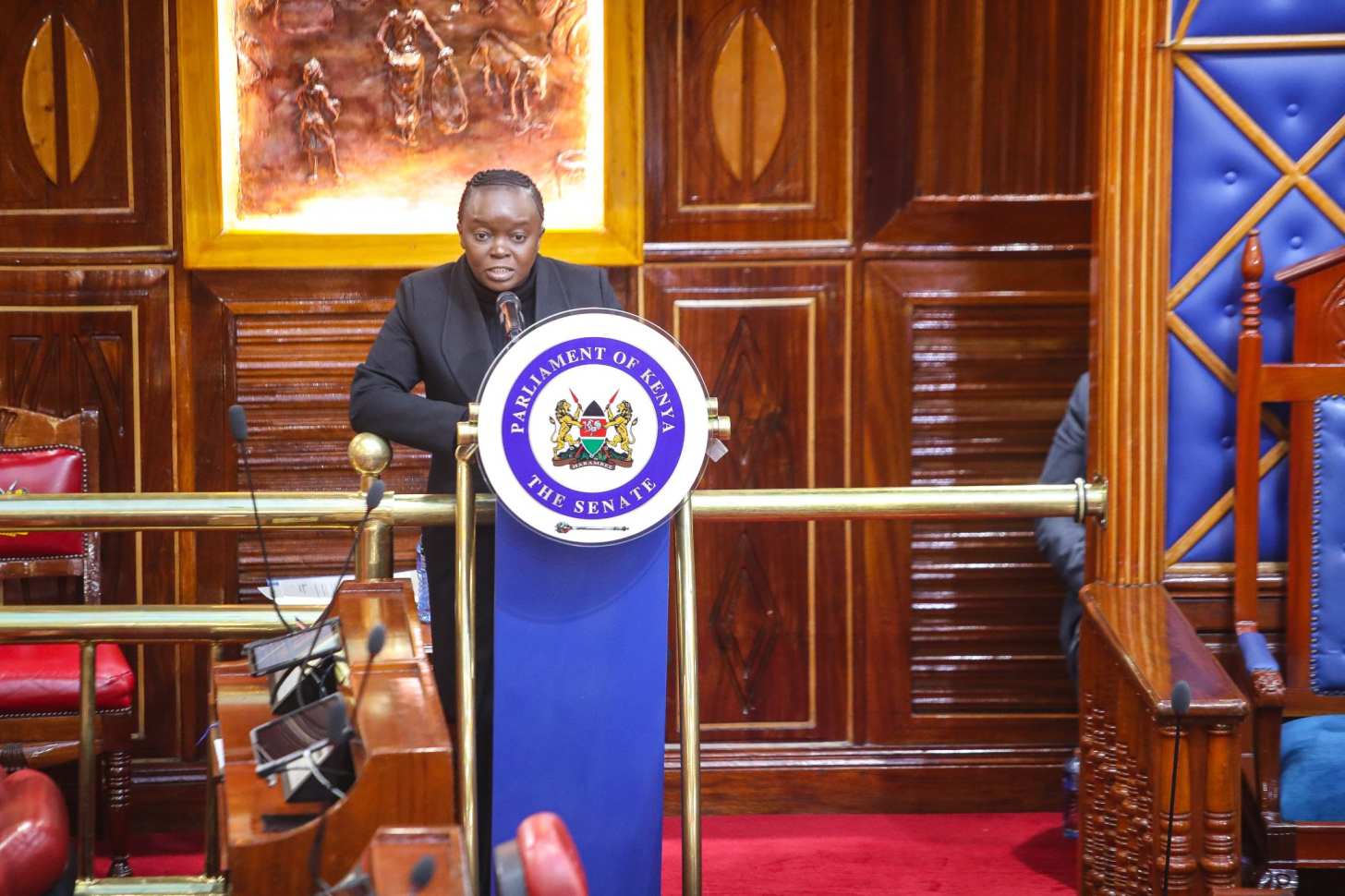Cabinet Secretary for Environment Deborah Barasa has told senators that the fast-spreading Mathenge tree has invaded over 1.1 million hectares of land in 22 counties, with Turkana and Marsabit among the most affected, as the government moves to implement a decade-long plan aimed at managing the destructive species.
Appearing before the Senate plenary on Wednesday, Barasa was responding to a question from Marsabit Senator Mohamed Chute regarding the unchecked spread of Prosopis juliflora, which is locally known as Mathenge.
She said the invasion was made worse by a historical misclassification during earlier government efforts to rehabilitate arid and semi-arid lands, and further accelerated during the 1997–1998 El Niño rains.
“The tree species was introduced in the 1970s to mitigate soil erosion, fuelwood shortages, inadequate livestock fodder, and other challenges associated with bare lands in the Arid and Semi-arid areas (ASALs),” Barasa told the House, quoting a previous Cabinet briefing.
“Subsequently, however, it was realized that its rapid spread leads to loss of biodiversity and farmlands, increased livestock deaths arising from consumption of its leaves and thorns, and increased spread of malaria.”
Barasa said her ministry has developed a National Prosopis Strategy and Action Plan for the period 2025 to 2035, which will guide efforts to both contain the spread and harness the potential value of the plant.
She confirmed that four counties — Marsabit, Isiolo, Baringo, and Tana River — have already put in place local spatial management plans, and communities in those areas have been trained on how to process charcoal, prepare animal feed, and explore other ways of benefiting from the tree.
The CS acknowledged that a number of earlier interventions had collapsed, including a 2015 gasification project in Baringo that was expected to turn Mathenge into a source of energy. The project failed due to high impurity levels in the harvested feedstock, making large-scale processing unsustainable.
The government now wants to shift its focus from uprooting the plant to using it in ways that are economically and environmentally beneficial.
“The government is not seeking to permanently uproot the trees across the country but find advantageous ways to use the plant,” the Cabinet had earlier resolved. It also floated the idea of researching whether the tree could be turned into renewable energy and eco-friendly wood products.
On March 13, 2024, President William Ruto’s Cabinet directed the formation of an inter-ministerial committee bringing together the ministries of Environment, Agriculture, and Energy to coordinate the national response to the Prosopis invasion.
The meeting noted that the Mathenge tree was largely responsible for loss of grazing land and declining productivity in several parts of the country.
The Cabinet was informed that the spread of the plant had significantly reduced arable land and was damaging wetlands, national parks, and ecosystems. In January 2024, the Environment Ministry revealed that the tree was first brought into Kenya in 1948 to combat desertification in the North Eastern region, but its spread has since turned into a national problem.
With a reported annual spread rate of 15 percent, the invasive tree has nearly wiped out indigenous plant species in many parts of the country. Out of the 22 counties affected, 16 have been identified as high-risk areas.
The counties battling the Mathenge invasion include Turkana, Tana River, Garissa, Isiolo, Marsabit, Baringo, Kilifi, Samburu, Mandera, Wajir, Kwale, Lamu, Kajiado, Taita Taveta, Tharaka Nithi, Meru, Mombasa, Migori, Kitui, and West Pokot.

